Are in-person tech conferences back in fashion? Or are engineers just willing to travel for fresh baguettes? In this post, I round up a few highlights from KubeCon Europe 2024, held March 19-24 in Paris.
My last KubeCon was in Detroit in 2022, when tech events were still slowly recovering from COVID. But KubeCon EU in Paris was buzzing, with more than 12,000 attendees! I couldn’t even get into a few of the most popular talks because the lines to get in wrapped around the exhibition hall even after the rooms were full. Fortunately, the CNCF has already posted all the talk recordings so we can catch up on what we missed in person.
Now that I’ve been back home for a bit, here are a few highlights I rounded up from KubeCon EU 2024.

Docker at KubeCon
If you stopped by the Docker booth, you may have seen our Megennis Motorsport Racing experience.
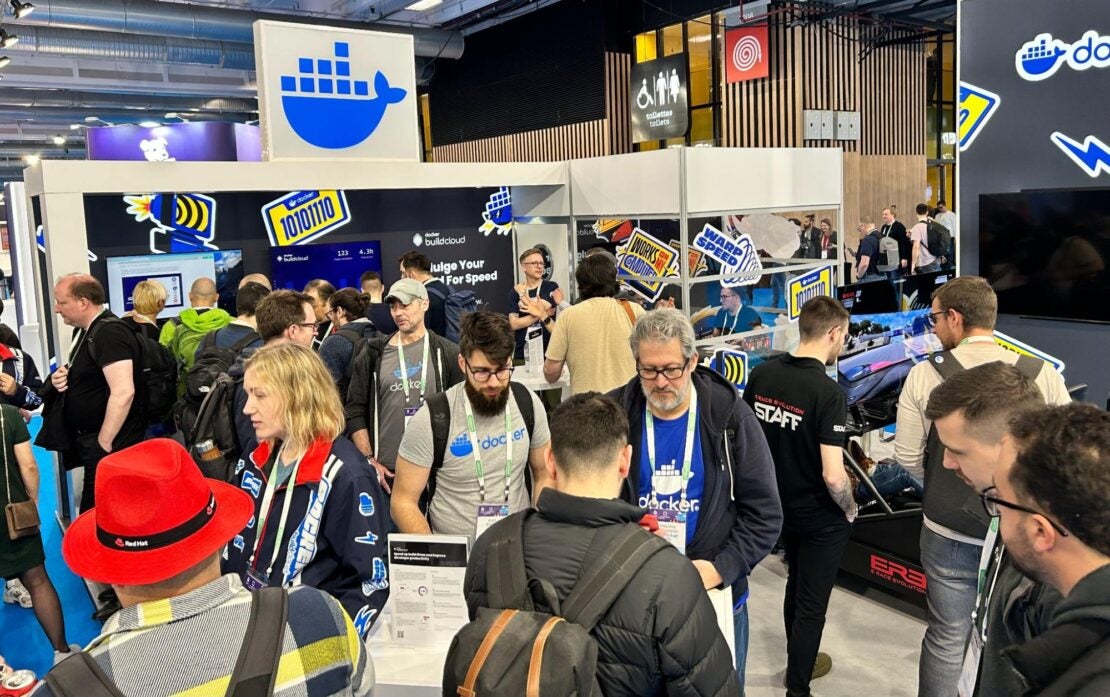
Or you may have talked to one of our engineers about our new fast Docker Build Cloud experience. Everyone I talked to about Build Cloud got it immediately. I’m proud of all the work we did to make fast, hosted image builds work seamlessly with the existing docker build.
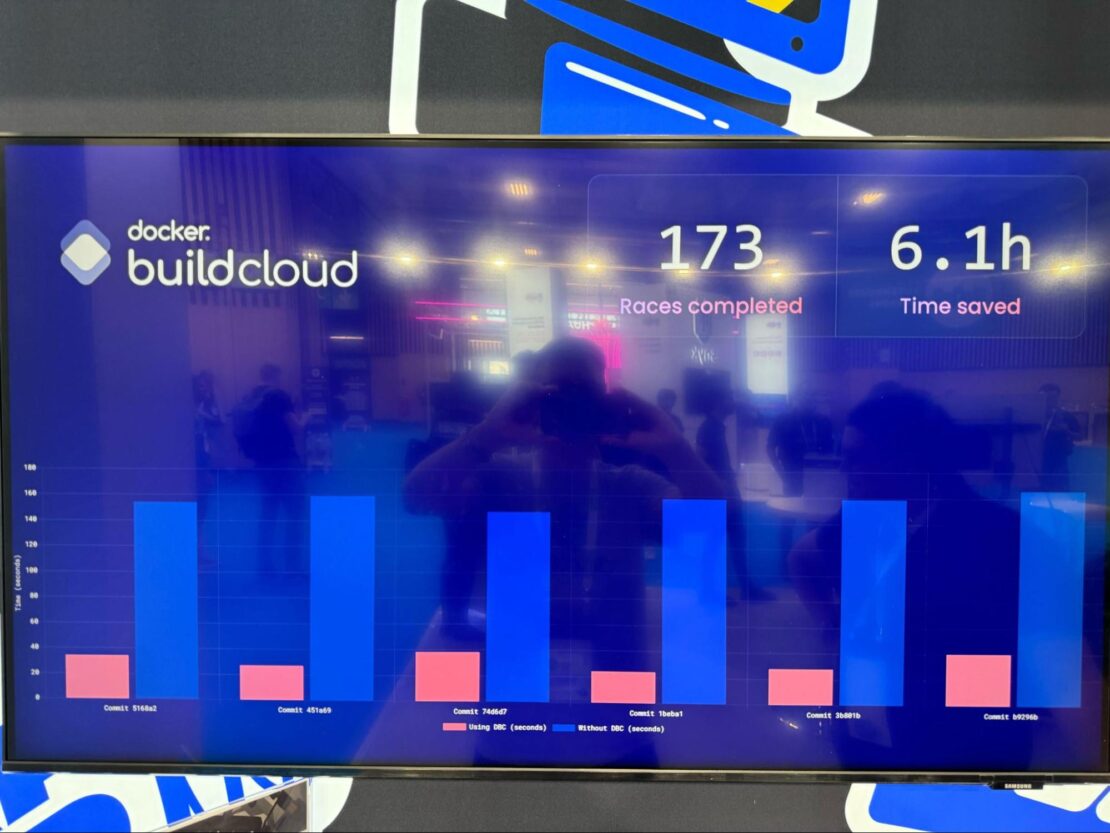
Docker Build Cloud wasn’t the only new product we highlighted at KubeCon this year. I also got a lot of questions about Docker Scout and how to track image dependencies. Our Head of Security, Rachel Taylor, was available to demo Docker Scout for curious customers.
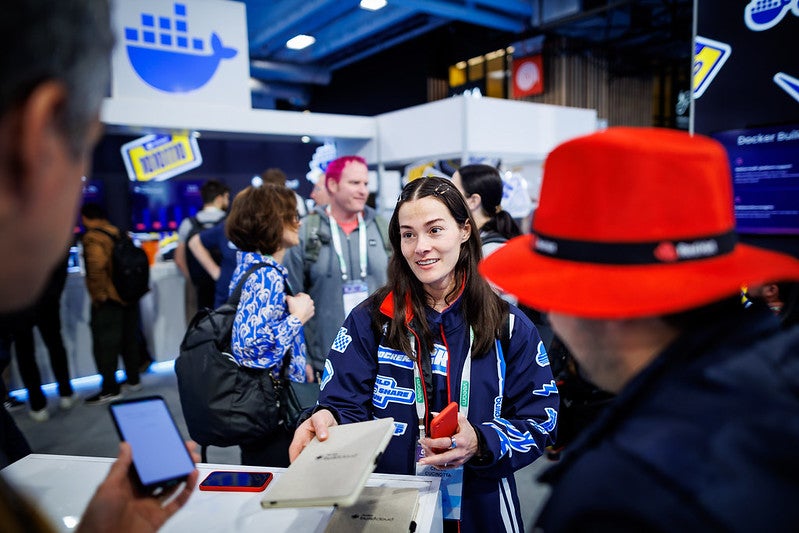
Docker Scout and Sysdig Security Day
In addition to live Docker Scout demos at the booth, Docker Scout was represented at Kubecon through a co-sponsored AMA panel and party with Sysdig Security Day. The event aimed to raise awareness around Docker’s impact on securing the software supply chain and how to solve concrete security issues with Docker Scout. It was an opportunity to explore topics in the cloud-native and open source security space alongside industry leaders Snyk and Sysdig.
The AMA panel featured Rachel Taylor, Director of Information Security, Risk, & Trust at Docker, who discussed approaches to securing the software supply chain. The post-content party served as an opportunity for Docker to hear more about our shared customers’ unique challenges one-on-one. Through participation in the event, Docker customers were able to learn more about how the Sysdig runtime monitoring integration within Docker Scout results in even more actionable insights and remediation recommendations.
Live from the show floor
Docker CEO Scott Johnston spoke with theCUBE hosts Savannah Peterson and Rob Strechay to discuss Docker Build Cloud. “What used to take an hour is now a minute and a half,” he explained.
Testcontainers and OpenShift
During KubeCon, we announced that Red Hat and Testcontainers have partnered to provide Testcontainers in OpenShift. This collaboration simplifies the testing process, allowing developers to efficiently manage their workflows without compromising on security or flexibility. By streamlining development tasks, this solution promises a significant boost in productivity for developers working within containerized environments. Read Improving the Developer Experience with Testcontainers and OpenShift to learn more.
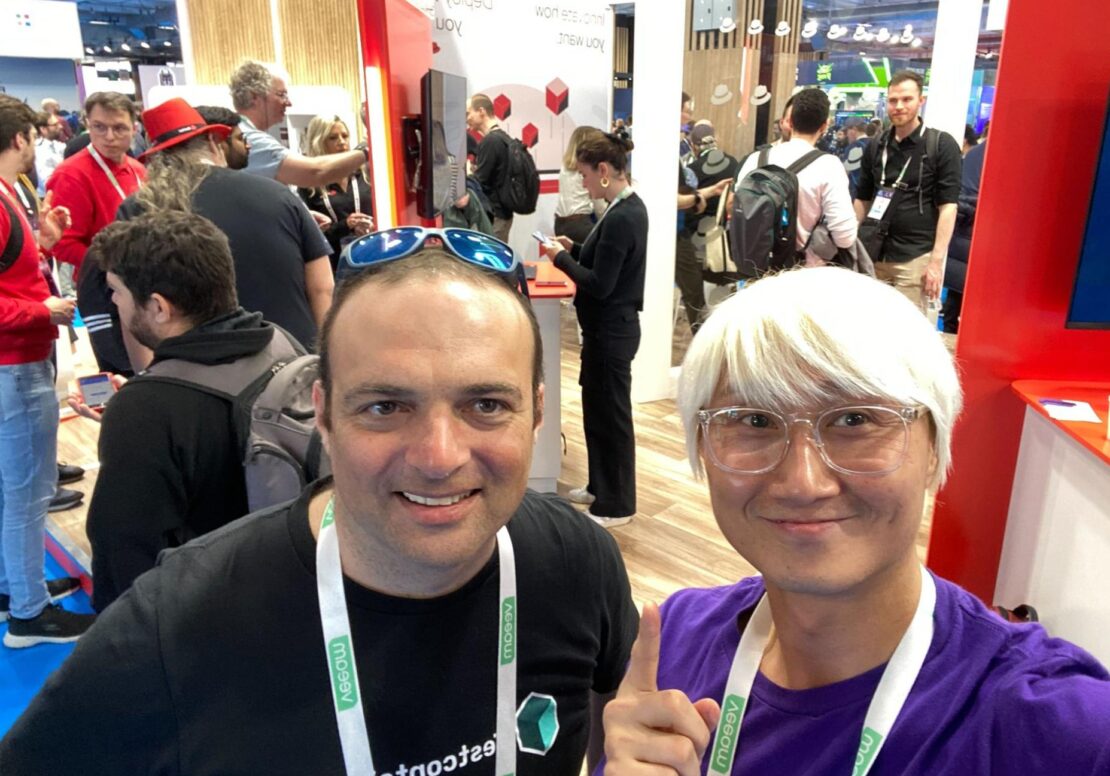
Eli Aleyner (Head of Technical Alliances at Docker) and Daniel Oh (Senior Principal Technical Marketing Manager at Red Hat) provided a demo and an AMA at the Red Hat booth.
Must-watch talks

For a long time, I’ve felt that the Kubernetes API model has been its superpower. The investment in easy ways to extend Kubernetes with CRDs and the controller-runtime project are unlocking a bunch of exciting platform engineering projects.
Here are a few of the many talks that I and other people on my team really liked, and that are on YouTube now.
Platform
In his talk Building a Large Scale Multi-Cloud Multi-Region SaaS Platform with Kubernetes Controllers, I loved how Sébastien Guilloux (Elastic) explains how to put all the pieces together to help build a multi-region platform. It takes advantage of the nice bits of Kubernetes controllers, while also questioning the assumptions about how global state should work.
Stefan Proda (ControlPlane) gave a talk on GitOps Continuous Delivery at Scale with Flux. Flux has a strong, opinionated point of view on how CI/CD tools should interact with CRDs and the events API. There were a few different talks on Crossplane that I’d like to go back and watch. We’ve been experimenting a lot with Crossplane at Docker, and we like how it fits into Helm and Image Registries in a way that fits in with our existing image and registry tools.
AI
Of course, people at KubeCon are infra nerds, so when we think about AI, we first think about all those GPUs the AIs are going to need.
There was an armful of GPU provisioning talks. I attended the How KubeVirt Improves Performance with CI-Driven Benchmarking, and You Can Too. Speakers Ryan Hallisey and Alay Patel from Nvidia talked about driving down the time to allocate VMs with GPUs. But how is AI going to fit into how we run and operate servers on Kubernetes? There was less consensus on this point, but it was fun to make random guesses on what it might look like. When I was hanging out at the AuthZed booth, I made a joke about asking an AI to write my infra access control rules, and they mostly laughed and rolled their eyes.
Slimming and debugging
Here’s a container journey I see a lot these days:
- I have a fat container image.
- I get a security alert about a vulnerability in one of that image’s dependencies that I don’t even use.
- I switch to a slimmer base image, like a distroless image.
- Oops! Now the image doesn’t work and is annoying to debug because there’s no shell.
But we’re making progress on making this easier!
In his KubeCon talk Is Your Image Really Distroless?, Docker’s Laurent Goderre walked through how to use multi-stage builds and init containers to separate out the build + init dependencies from the steady-state runtime dependencies.
Ephemeral containers in Kubernetes graduated to stable in 2022. In their talk, Building a Tool to Debug Minimal Container Images in Kubernetes, Docker, and ContainerD, Kyle Quest (AutonomousPlane) and Saiyam Pathak (Civo) showed how you can use the ephemeral containers API to build tooling for creating a shell in a distroless container without a shell.
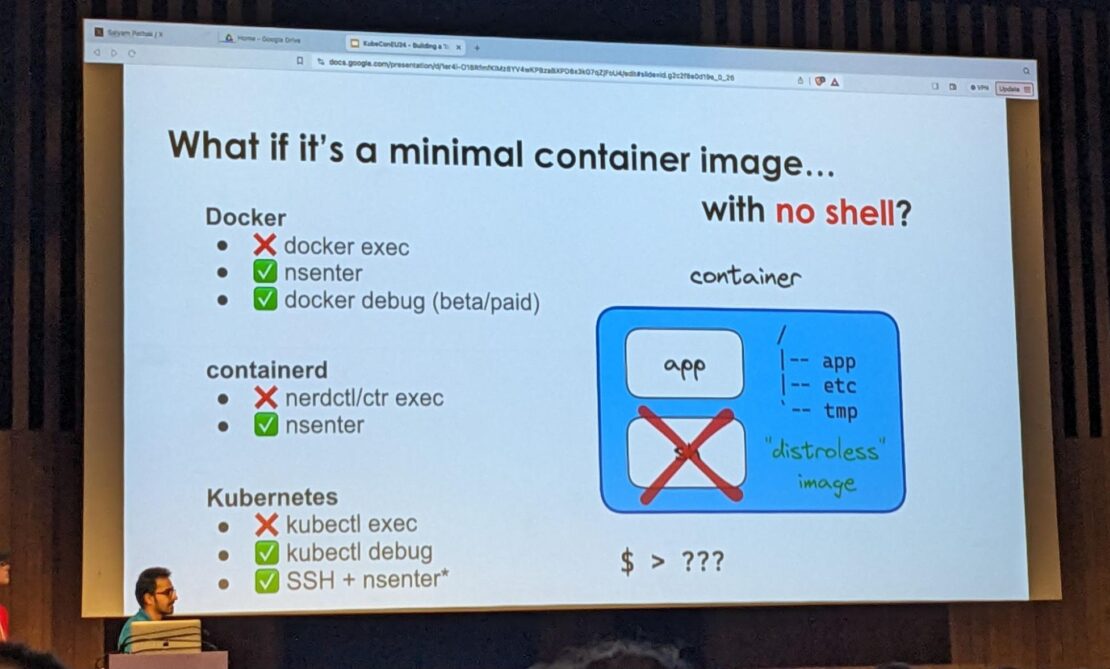
One thing that Kyle and Saiyam mentioned was how useful Nix and Nixery.dev is for building these kinds of debugging tools. We’re also using Nix in docker debug. Docker engineer Johannes Grossman says that Nix solves some problems around dynamic linking that he calls “the clash-free composability property of Nix.”
See you in Salt Lake City!
Now that we’ve recovered from the action-packed KubeCon in Paris, we can start planning for KubeCon + CloudNativeCon North America 2024. We’ll see you in beautiful Salt Lake City!
Learn more
- Read Red Hat, Docker Ease Developer Experience with Testcontainers Cloud.
- Read Docker CEO leans in on Build Cloud and testing to give time back to developers on SiliconAngle.
- Get started with Docker Build Cloud for the fastest build times.
- To learn more about Docker Build Cloud, reach out to a Docker sales expert.
